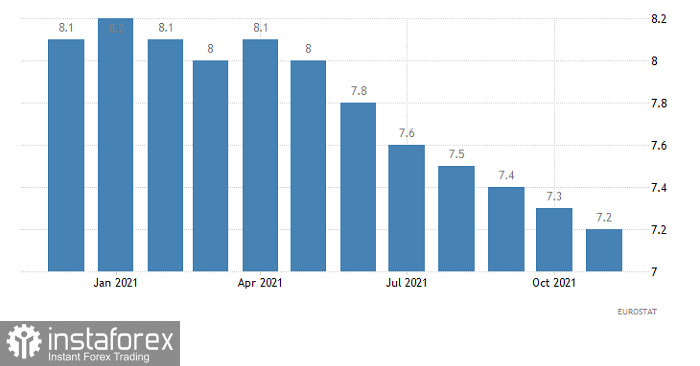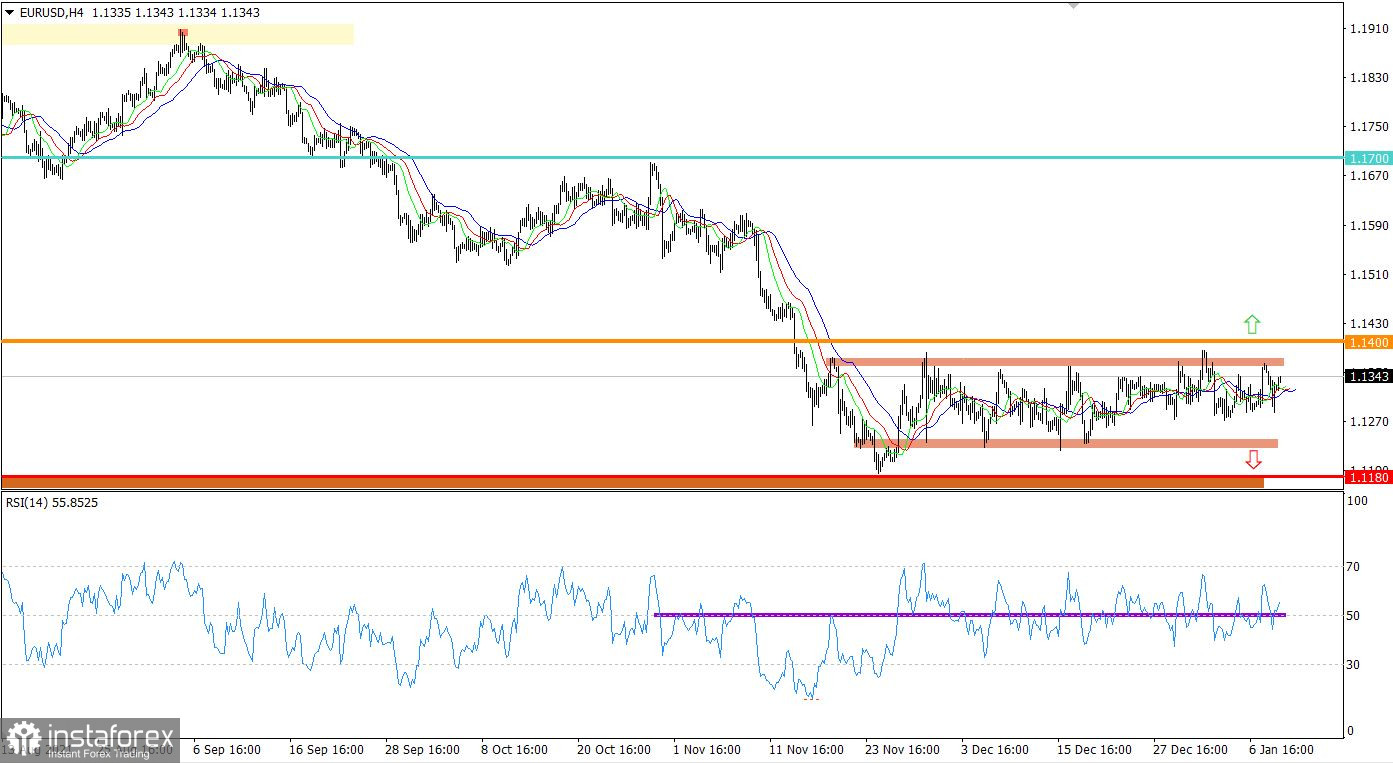In general, there is nothing surprising in the fact that the market ignored the data on the unemployment rate in Europe, which fell from 7.3% to 7.2%. After the market ignored the data on inflation and retail sales, this was quite an expected reaction. It is surprising that after a while the single European currency began to decline. To be quite precise, this process began almost before the opening of the US trading session. That is, as on Friday, the market is largely moving against macroeconomic statistics. Even if for a short period of time. After all, as a result, the quotes returned to their original positions. And it turns out that the euro has not been able to break out of stagnation for more than a month, hanging around around the 1.1325 mark, with slight deviations up and down. Apparently, something very serious is needed to bring the market out of this stupor. It is quite possible that tomorrow's inflation data in the United States will be the very factor that will move the situation from the dead end. Until then, the market will continue to stagnate.
Unemployment rate (Europe):

Local price jumps for the EURUSD pair did not lead to a breakdown of the 1.1225/1.1355 horizontal channel. The quote, as before, has been moving along the characteristic magnitude for more than six weeks.
Technical instruments RSI and Alligator confirm the formation of a flat, but at the same time indicate a high speculative interest among market participants. All this can lead to significant price changes at the end of the flat.
On the daily chart, flat slowed down the downward trend, but did not complete it.
Expectations and prospects:
In this situation, the tactics of working on a rebound from the specified flat boundaries is still relevant, but the breakout method is considered the main strategy. Therefore, traders are already considering the control values 1.1220 and 1.1400 as signal levels against which they will perform the main actions in the market.
Comprehensive indicator analysis gives a buy signal based on short-term and intraday periods due to price movement within the upper flat border.






















